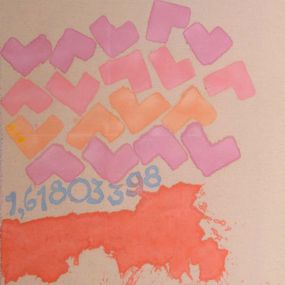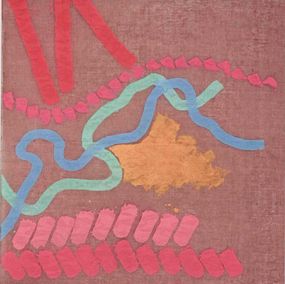
by Giorgio Griffa
Painting : acrylic 82 x 59.5 x 0.3 cm 32.3 x 23.4 x 0.1 inch
Free returns within 14 days
Authenticity guaranteed
Learn moreAbout the artwork
Unique work
Hand-signed by artist
Sold with certificate of Authenticity from the gallery
Invoice from the gallery
Artwork sold in perfect condition
Artwork location: Italy
A unique piece by one of the most esteemed contemporary Italian artist, for your private and sophisticated collection!
Remembering the great lesson of the genius Leonardo da Vinci's Golden Ratio, Giorgio Griffa recreates in elementary signs and number the magician formula!
Giorgio Griffa was born in Turin in 1936; he started painting as a child under the guidance of traditional painters. In 1958, he graduated in law and started working as a lawyer. In 1960, felling the need for a new period of artistic training, he enrolled in the private school of Filippo Scroppo, an abstract artist from Turin who has been a member of the Movimento per l'Arte Concreta (MAC). For three years, he has attended the courses, even though the works he produced in that period were all characterized by a figurative style.
In the following years, he proceeded to progressively reduce the representative elements, without adopting a truly abstract style, until he produced non-representational works, the cycle entitled Quasi dipinto (Quasi Painting). In this cycle, he made the choice of unfinishedness that was to become a constant feature of his work. He displayed these works in 1968 at the Galleria Martano in Turin. In 1969, he began exhibiting with the Galleria Sperone, also in Turin; in 1970, his works were featured at Ileana Sonnabend's galleries in New York and Paris.
It was in that period that he was associated to the exponents of Arte Povera, whom he mentioned on the occasion of his exhibition in 2000 at the Galleria Salzano in Turin as follows: "The intelligence of the material was not used as a tool for new syntheses of form - which is, however, inevitable - but it became the protagonist of the work, with the artist's hand at its service. Similarly, since I am convinced of the intelligence of painting, I put my hand at the service of the colors that encounter the canvas, limiting my involvement to the simple gesture of placing the brush".
For about two years, from 1973 to 1975, he has painted almost exclusively horizontal lines: these consisted of a continuous line that was repeated - that is, by a series of brushstrokes placed one next to the other horizontally. In the following years, series of different signs started to coexist on the canvas. Griffa started the series called Connessioni o Contaminazioni (Connections or Contaminations), a modified version of the previous series entitled Segni primari (Primary Signs).
This was the period in which the artist's Minimalist reflections paved the way for new thoughts on painting's and sculpture's remarkable store of memory. In reality, Griffa was not a Minimalist. Indeed, Paolo Fossati has clarified the difference between Griffa's work and Mimimalism. So in 1979 he painted a triptych, not by chance entitled Riflessione (Reflection), consisting of three large canvases dedicated to Matisse, Klee and Yves Klein respectively. This triptych, displayed in 1980 at the Galleria Martano in Turin (and then at Lorenzelli Arte in Milan), was the first step towards another series, which was eventually entitled (in 2000) Alter Ego.
In this series, each work was dedicated to artists of different epochs. With long pauses, this series has continued for thirty years. In the 1980s, there was a remarkable development of the cycle entitled Contaminazioni. The signs were often accompanied by areas of color of varying sizes. At the beginning of the 1990s, Griffa started the series Tre linee con arabesco (Three Lines with Arabesque), where each work, whether on canvas, a drawing, a watercolor, or an engraving, contains - among other signs - three lines and an arabesque. These works are numbered in the order in which they are created: the most recent is number 1,661. The numbering aims at establishing the position of the individual work within the series and, at the same time, to remind us of the fact that they belong to this series.
Later in the 1990s, Griffa started another series, where he used numbers. This was the series titled Numerazioni (Numbering). Here, in each picture, the numbers indicate the order in which various signs and colors were applied. The numbers refer to, on one hand, the order in which the pictorial event takes place and, on the other hand, the development of this event, with one sign after another in both time and space. It should, however, be noticed that there is no possibility of development or progress from one series to the other, but there is merely the presence of different aspects of coming into being. Thus, rather than following one another, the series overlap, intersect and coexist next to each other. The series that Griffa produced in the 2000s confirm this aspect: their origins date back to twenty years ago, at the end of the 1970s. The series Alter Ego, with its reference to other artists, such as Piero della Francesca, Tintoretto, Josef Beuys or Mario Merz, originated from the triptych of 1979 titled Riflessione (Reflection), passed through various works of the 1980s and 1990s and clarified its identity with a group of works in the 2000s.
In its turn, the cycle Sezione Aurea (Golden Section), which concerns this endless irrational number characterizing its mathematical aspect, avails of the transparencies of the canvas that were already a feature of Griffa's great work Dionisio (Dionysus) of 1980, which was exhibited at the Venice Biennal in the same year. Between the 2009 and 2010 Griffa held solo shows at the Museum of Baotou (Baotou, Inner Mongolia), at the BaGuaShan Art Gallery (Taiwan) and at the Gehua Art Gallery (Pechino). The Museum of Contemporary Art in Rome (MACRO) organized his personal exhibition (12.02.2011 - 13.03.2011) accompanied by a catalog: Giorgio Griffa: Golden Ratio, curated by Luca Massimo Barbero, MACRO, Marsilio Editori, 2011. The works by Giorgio Griffa are in numerous museums and private collections.
About the seller
Wallector Srl • Italy
Artsper seller since 2019
Vetted Seller
Imagine it at home
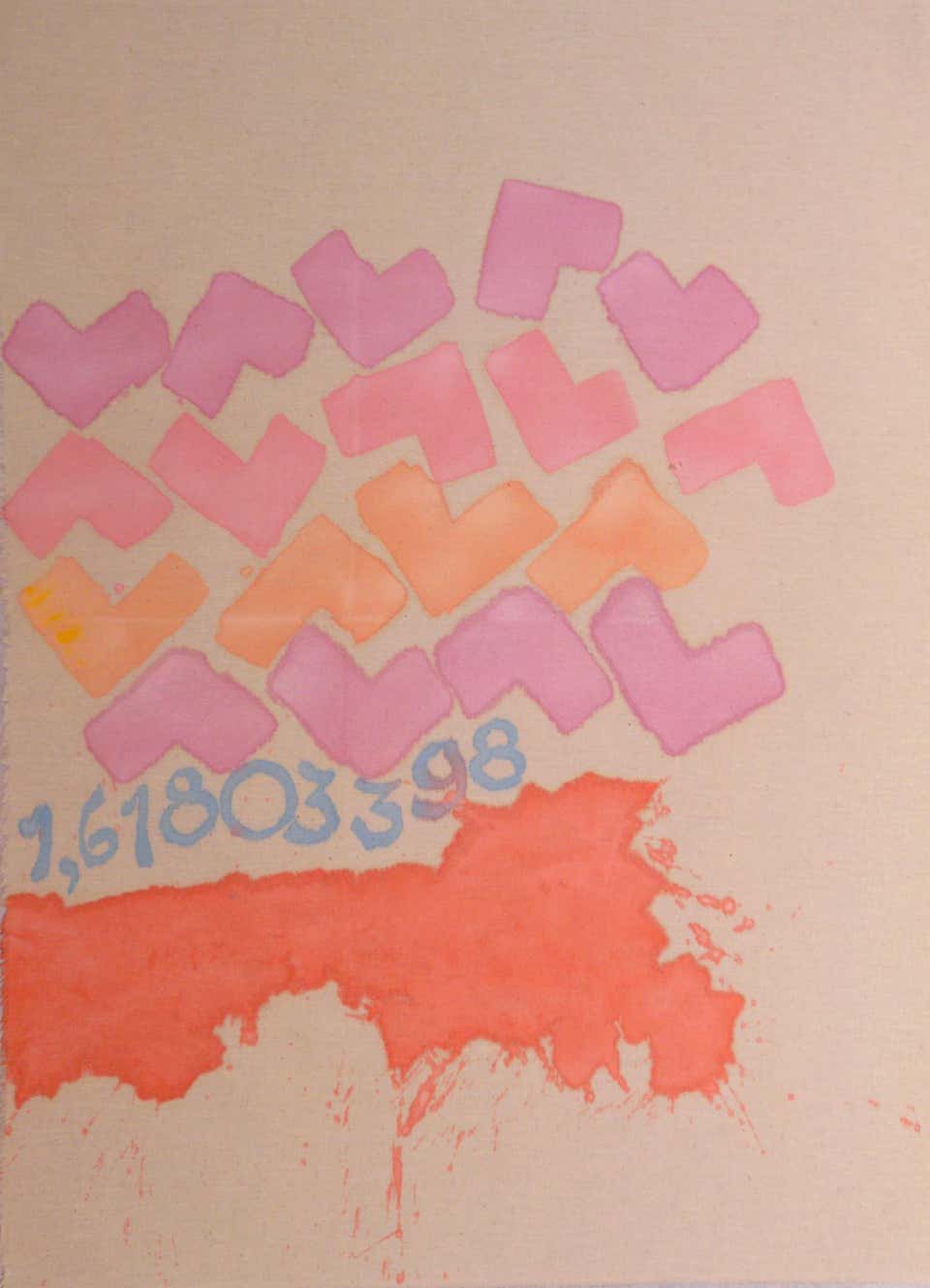
Discover more by the artist

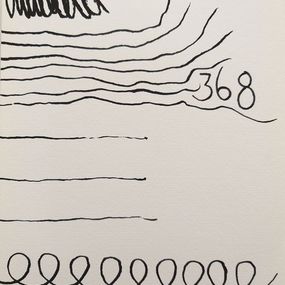
Tre linee con arabesco n. 368
Giorgio Griffa
Print - 30 x 21 x 0.1 cm Print - 11.8 x 8.3 x 0 inch
€400
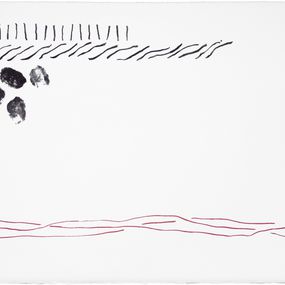
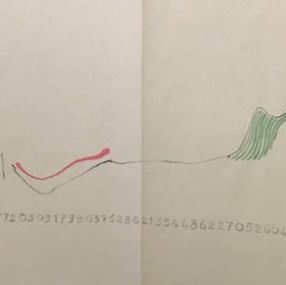
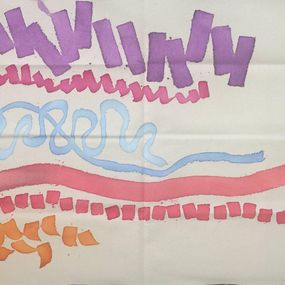
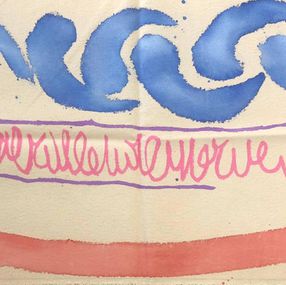
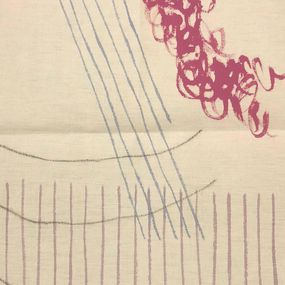

Works in prints from Giorgio Griffa

Tre linee con arabesco n. 368
Giorgio Griffa
Print - 30 x 21 x 0.1 cm Print - 11.8 x 8.3 x 0 inch
€400

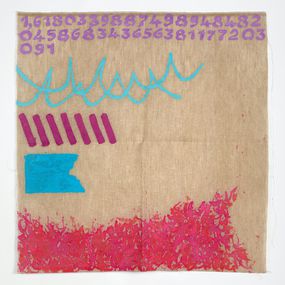
Born in Turin, Giorgio Griffa began painting at the age of 9 where he paints today.
Close to the artists of Arte Povera, the Minimalists, and the Conceptuals, of the 1970s.
Associated with movements such as Arte Povera, Conceptual Art, see Minimalism, Giorgio Griffa is a painter whose practice has little to do with any specific current. It is as a painter, with his consistent personal practice that he has been advancing since the 1960s, proposing his painting in a continuous future.
As early as the 1970s, his paintings can be appreciated on the international art scene (more than 150 exhibitions.)
21st century exhibition selection.
UN | Works 1968-1973 and two | Pink and purple 2001 at the GAM in Turin, 2001.///.
Giorgio Griffa Walter Storms Gallery, Munich, 2001.///.
Giorgio Griffa, Manifatture artistiche Palazzo Cavour, Turin, 2002.///.
collective 18 x 24 Gallery 41 contemporary art, Turin, 2003.///.
Giorgio Griffa - Opere recenti Studio Guastalla, Milan, 2003.///.
Anni 70 80 90 Lorenzelli Arte, Milan, 2003.///.
Red clouds Studio Guastalla, Milan, 2004.///.
AAVV - 30 Galleria Fumagalli Bergame, 2004.///.
Giorgio Griffa - Galleria dArte 2000 & NOVECENTO, Reggio Emilia, 2004.///.
Gli Anni 80 Lorenzelli Arte, Milan, 2004.///.
Enigma Galleria Biasutti Giampiero, Turin, 2005.///.
Arbeiten auf Papier recommended Walter Storms Galerie, Munich, 2005.///.
Between gesture and sign. Poetics of the informal Galleria Biasutti Giampiero, Turin, 2005.///.
Giorgio Griffa, Galerie Point to point Nîmes, 2007.///.
2003Canone Aureo | gold report at MACRO in Rome, 2010.///.
collective 18 x 24 Galleria 41 artecontemporanea, Turin -Fragments 1968-2012 at Casey Kaplan Gallery, New York, 2012-2013.///.
Alles auf eine Karte ... Walter Storms Galerie, Munich -Dance of neurons at Galleria Lorcan O'Neill, Roma, 2014.///.
Giorgio Griffa - Recent Works Studio Guastalla, Milan -Giorgio Griffa at the Douglas Hyde Gallery, Trinity College, Dublin, in 2014.///.
Anni 70 80 90 Lorenzelli Arte, Milan1968-2014 A retrospective organized by Andrea Bellini, Center for Contemporary Art, Geneva, 2015.///.
2004Painting in the fold by Andrea Bellini organized and Martin Clark, Kusthall Bergen, Bergen, 2015.///.
Red Cloud Studio Guastalla, Milan -The 1970s at the Casey Kaplan Gallery, New York, 2016.///.
AAVV - 30 Galleria Fumagalli Bergamo -Work on paper Andrea Bellini organized by Giuliani Foundation, Rome, 2016.///.
Giorgio Griffa - Galleria dArte 2000 & NOVECENTO, Reggio Emilia -Giorgio Griffa organized by Bice Curiger, Vincent Van Gogh Foundation Arles, Arles, 2016.///.
Gli Anni 80 Lorenzelli Arte, Milan Almost all organized by Suzanne Cotter and Andrea Bellini, Fundação de Serralves, Porto, 2016.///.
More works from Wallector Srl
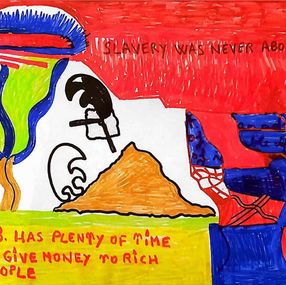
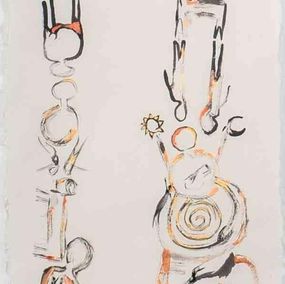
Goddess and Pillar of the Western Sky
Parimah Avani
Fine Art Drawings - 182 x 32 x 0.2 cm Fine Art Drawings - 71.7 x 12.6 x 0.1 inch
€1,300

10 - Greene & Greene
Genny Puccini
Fine Art Drawings - 50 x 50 x 0.3 cm Fine Art Drawings - 19.7 x 19.7 x 0.1 inch
€850
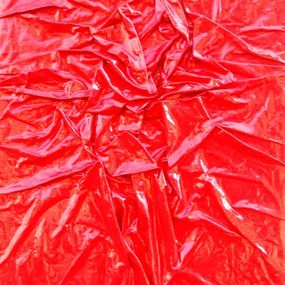
Like a Red Rower
Giuseppe Zumbolo
Painting - 67 x 54 x 0.1 cm Painting - 26.4 x 21.3 x 0 inch
€1,100

Leaves
Aurelio Mistruzzi
Fine Art Drawings - 48 x 35 x 0.2 cm Fine Art Drawings - 18.9 x 13.8 x 0.1 inch
€300
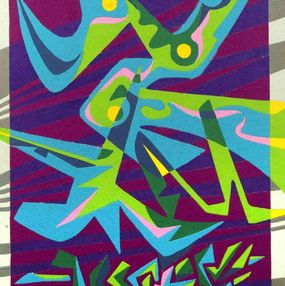
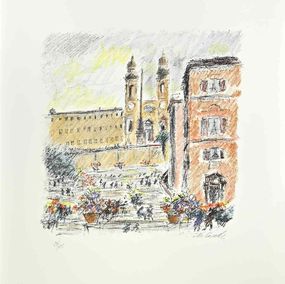
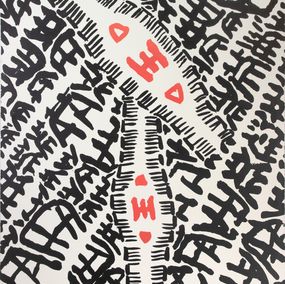
How does Artsper protect you?
Protect your purchase
We’re here to help you collect art securely. When you browse and buy on Artsper, you benefit from our guaranteed protections.
Buy works from the best galleries
We partner with the best art galleries. All sellers on Artsper have been carefully reviewed and approved by our team. All of our partner galleries respect our code of ethics.
Know what you’re getting
Each work on Artsper is studied and validated by our team before appearing online. Get personalized support Contemporary art specialists are available by phone and email to answer all of your questions about our works of art. Get personalized advice and curated suggestions for your collection.
Resell your artworks
As a private individual, you have the possibility to resell on Artsper your works acquired on Artsper. For more information click here.
Make an offer with Artsper
Negotiate prices
Price negotiation is possible. Like in a gallery, this allows you to open a discussion and purchase your works at your preferred price.
Get our help negotiating
Let our team handle the negotiations and get back to you once the best deal is made.
Order safely
Artsper’s satisfaction guarantee
With Artsper, you have the opportunity to return a work free of charge within 14 days of receipt if it does not suit you, for whatever reason. You will then receive a full refund for your order.
Protect your purchase with Artsper’s payment partners
All credit card payments are processed by Paybox, the trusted leader in payment processing for international businesses. Paybox ensures the highest level of security.
Get specialized support from Artsper in the event of a problem
On the rare occasion that a work of art arrives in a different condition than described, we will work to administer a return, refund, restoration or exchange for you. Our team will always keep you informed on the progress of your request and will go above and beyond to offer you personalized solutions.
To benefit from Artsper’s protections you must:
-
Place your order using one of Artsper's payment methods.
-
Report any issues to Artsper within one week of receiving your work.
-
Provide all requested photographic evidence of the problem (including the original artwork and packaging).
Artsper’s guarantee covers the following problems:
-
You receive a work that’s missing a described characteristic (such as a signature or a frame)
-
You receive a work with different characteristics than those described at the time of purchase
-
You receive a damaged piece of work
-
Your purchase is declared lost or damaged during transit
-
You receive a work that is a different in color than what you ordered
-
Your purchase is delayed
Why buy on Artsper?
Artsper gives you access to the largest catalog of contemporary artworks, from the best galleries (200,000 works, 25,000 artists, 2,000 partner galleries).
We select the galleries with which we collaborate. This demanding selection, operated by our team of experts, offers you several guarantees:
- Double expertise regarding the quality and originality of the works. On the one hand by professional galleries that select their artists and works. On the other hand by Artsper which selects its partner galleries according to the quality of their catalog and their reputation.
- Access to the entire catalog of works from our partner galleries, sold at the same price as in the gallery.
- The possibility of returning purchased works (within 14 days) if they do not suit you, wherever you are in the world. Which is not the case outside Artsper.
- The possibility of easily reselling the work you purchased on Artsper.
We also facilitate the search for works according to your preferences thanks to our intelligent features such as:
- Your custom selection, created based on your tastes;
- Your custom universe, choose from our different universes the one that suits you and access selections of works!
Or simply thanks to our filters on the catalog allowing you to refine your searches.
Our customer service is also at your service and responds within the shortest time!
Can I negotiate the price of an artwork?
For some artworks, you can negotiate the price. If the price of the work is negotiable, you have a “Make an offer” button under the “Buy this work” one.
To submit your offer, you must make a payment of the desired amount. Your offer will then be forwarded to the gallery, which reserves the right to accept or reject it. If your offer is accepted, it means that your order is confirmed by the gallery and they will prepare the artwork for shipment. If your offer is rejected, you will be refunded the total amount paid automatically. The gallery can also propose a counter-offer for the acquisition of the artwork.
If you have any questions, please feel free to contact us: [email protected].
Where can I have my order delivered?
Artsper delivers worldwide!
However, please note that once your order reaches its destination, it may be subject to VAT or other customs fees. These charges are beyond our control and you will be responsible for paying them (this is indicated at the ‘checkout’ first step).
Select the delivery address of your choice. Please make sure that someone is present to receive your order.
If your billing address is different to your delivery address you can specify this at the checkout.
Return and cancellation
You can return the artwork without needing to provide a reason or pay a penalty fee up to 14 days after receiving your order.
In the case that the right of withdrawal is exercised in the aforementioned time frame, the price of the artwork(s) purchased and the shipping costs will be reimbursed by us as soon as the gallery has received the artwork and notified us.
Artsper will manage the return of the work and will bear the cost of returns (which will either be paid by you and refunded by Artsper or directly paid by Artsper).
The artwork must be returned in perfect condition and in its original packaging (or equivalent).
The buyer exercises his right of withdrawal directly from MUMART, by sending an email to the address: [email protected].
How can I best showcase my work?
If you have bought a painting, a sculpture or a work on paper, find expert advice on its conservation and how to best enhace it:

